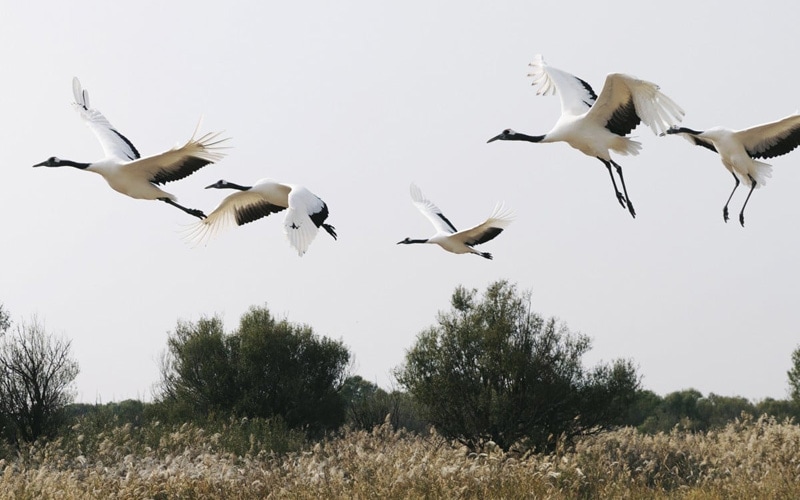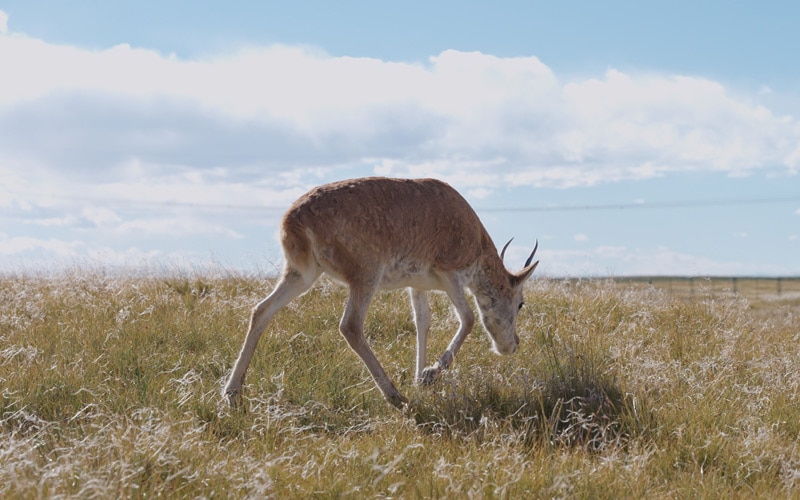A Species in Focus: Safeguarding Mexico's Jaguars
Home to 12% of all species found in the world, Mexico is a treasure trove of biodiversity. More than 100,000 species of flora, fauna, and fungi can be found in the North American nation, which ranks second globally for reptile diversity and third for mammal diversity.
In Mexico's south east, the spectacular Yucatan Peninsula covers around 197,600 km2 – nearly twice the landmass of Iceland – and follows 1,100 km2 of coastline. Its diverse ecosystem includes tropical rainforests, coral reefs, sand dunes, coastal lagoons, caves, underground rivers, and nearly 190 km2 of mangroves. In 1989, the Mexican government established Dzilam State Reserve in the Yucatan Peninsula. Spread over an area of 690 km2, the reserve is rich with habitats home to rare and endemic species.

Due to human activity and climate change, the ecosystem in Dzilam State Reserve is rapidly deteriorating, with habitats for endemic species rapidly disappearing – many species are endangered and under official state-governed protection.
Coming together to protect biodiversity
Of the wild animals that inhabit the reserve, the North American jaguar is perhaps the most famous. And as the only species belonging to the leopard genus found in the Americas, the future of this big cat is as precarious as it is singular. Due to habitat loss and fragmentation, the 'Panthera onca' is listed as near-threatened on the IUCN Red List. In Dzilam's wild terrain, the elusive cat is hard to monitor and protect using conventional manual methods, not least because it is primarily active at night and in twilight.

Identifying jaguar pawprints in the monitored area
Launched in May 2022, a project under the IUCN and Huawei Tech4Nature partnership is harnessing the power of digital technology to better protect this majestic animal and the ecosystems it inhabits over the vast and sparsely populated area of Dzilam State Reserve.
Two levels of monitoring through sight and sound
At the ecosystem level, the reserve is an important biological corridor for mammals, and listening to the soundscape can deliver insights into the effects of climate change on biodiversity. The project has deployed 60 AudioMoth eco-acoustic monitoring devices developed by the NGO Rainforest Connection to record environmental sounds.
At the species level, the aim is to strengthen protection of the jaguar, as well as monitoring 24 other species of interest, including the Moreletti's crocodile and American flamingo.
Because the jaguar is not a particularly vocal animal, offline infrared camera traps and two networked camera traps are a more effective approach than acoustics monitoring for both offline and real-time data collection. Cameras have been deployed over an area of 19.4 km2, covering coastal mangroves, low deciduous forest, and marsh lands – all areas frequented by the jaguar. Image and video capture are triggered when a species of interest moves past the sensor. For networked cameras, data is uploaded in real-time for analysis on HUAWEI CLOUD's platform, with algorithms trained to recognize target species. For offline traps, rangers collect the images each month and upload the data for analysis.
As well as providing data-driven insights for habitat protection, research, and monitoring during breeding season and when the cats are active, the system will potentially provide strong capabilities for alerts and remote dispatch if individual animals are caught, hunted, or disturbed.

Analysis of jaguar footage captured
Partnership power
This Tech4Nature project benefits from the expertise of a wide range of partners, including International Union for Conservation of Nature (IUCN), Yucatan State Government, the local Mexican women-led impact innovation agency C Minds, the Polytechnic University of Yucatan (UPY), Rainforest Connection, and Huawei. As well as spreading awareness about the impact of climate change, the project will also involve the local community in areas like formulating policy and mangrove restoration.
The combination of the information collected by the eco-acoustic monitoring devices and cameras will provide decision-makers and stakeholders with a better understanding of the conservation status of the studied ecosystems, behavioral patterns of the species that inhabit the reserve, and impact of extreme events such as hurricanes and floods.
What's happened so far?
By September 2022, the first phase of the project had been completed, with 20 infrared camera traps and 60 acoustic monitoring devices deployed in mangrove, tropical jungle, and savanna ecosystems in Dzilam State Reserve. Every 40 days or so, Regina Cervera, the project coordinator at nature conservation organization C Minds, gets together with a team of experts, engineers and officials to collect data from a network of sensors, cameras, and microphones installed in the wetlands of the Dzilam de Bravo reserve in Yucatan, Mexico.
As of May 2023, the team had collected more than 25,000 photos, 550,000 audio recordings and many video clips. Based on these data, the project, involving AI for Climate and International Union for Conservation of Nature, has identified over 119 species, including five jaguars (two males, one female and two cubs.) It wasn't a proven fact until that point that the nature reserve was actually home to the big cats.
-
550,000
vocalizations recorded
-
5
jaguars identified
Regina Cervera also said that "Based on all the data we've collected,we're now setting the basis for a statewide biodiversity monitoring AI system, where we seek to protect at least 30% of our State Reserves here in Yucatan."









